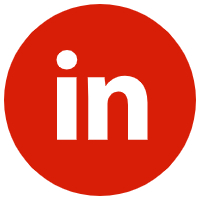
The United States energy demand is growing at a very fast rate, and there is a solution that is vastly popular because it can be done swiftly, is handy and cost-effective, that is distributed energy production, specifically distributed solar energy. It is becoming a powerful means to fill the United States’ energy gap.
Briefly: Due to electrification, artificial intelligence-based data centers, and the reshorning of the manufacturing sector, electricity demand in the US is increasing at a rapid rate. But the existing power plants are literally short of coping with it. Distributed energy, especially distributed solar energy, can change the US energy future.
Let’s explore how and why this transition happened, and what this means for the future of US energy.
Why US electricity demand is increasing
The US energy system is facing a lot of stresses today:
Artificial intelligence and encrypted data centers use a lot of electricity.
Transportation electrification, such as more and more electric vehicles and charging stations.
Clean energy goals have ignited the resurgence of manufacturing, and industries are drawing more power. Household devices, such as electric stoves and electric heaters, are also increasing.
The National Electrical Manufacturers Association tells us that by 2050, demand for electricity may increase by as much as 50%. The problem is, that the existing power grid facilities are getting older and older, and new central power plants are being built too slowly, so the national power grid capacity can no longer keep up with demand.
Why Distributed Energy Generation Matters
What Is Distributed Energy?
Distributed energy refers to small-scale electricity generation sources located close to the point of consumption. These include:
Rooftop solar panels
Localized battery storage systems
Microgrids
Community solar installations
This decentralization reduces transmission losses, increases grid resilience, and enables faster deployment—making it a smart solution to America’s energy crisis.
The Case for Distributed Solar Power
What solar can do
Distributed solar is perfectly suited to address the energy gap we currently have for three reasons:
Flexible installation: Factories, parking lots, and rooftops can all be outfitted with it.
Fast: Week or month timelines are what it takes to install distributed solar systems, compared to large-scale power generation projects.
Low cost: Falling equipment prices and tax incentives make solar often less expensive than conventional electricity.
Real benefits
Reduce strain on the grid during peak demand.
Saves households and businesses money on their electricity bills.
Creates jobs, such as installing, maintaining, and monitoring solar equipment.
Issues to be solved
Even though distributed solar is extremely promising, it does have problems:
It takes a while to get connected to the grid.
Permitting and zoning laws can limit its expansion.
Grid coordination can be complicated where solar is used the most.
Policymakers and utilities need to simplify procedures and update grid policies so that distributed solar can work better.
5 Reasons Why Distributed Solar Power Is the Answer
Have it up and running in no time
The majority of solar systems are up and running within three months of being installed.
Energy equity
Distributed solar brings electricity to rural communities without the need for a large investment in upgrading the grid.
Carbon reduction targets
Solar power is an ideal match for the country’s climate and zero-carbon agenda.
Improved grids
Reduce reliance on aging transmission infrastructure.
Resilient economies
Enhance local economic growth and lower long-term electricity expenses.
Policy Momentum Is Building
State and federal governments are leading distributed energy production:
The Inflation Reduction Act (IRA) provides tax credits for solar energy usage.
The majority of states’ net metering laws allow the excess solar energy to be back-fed onto the grid and credited.
Green bank lending also provides new sources of financing for homes and businesses.
Looking forward: The future of distributed energy in the United States
With the right policies and infrastructure, distributed solar energy can be a flexible, secure, and affordable core element of the U.S. energy system. Not to replace traditional centralized energy, but to supplement it, filling those gaps as electricity demand increases.
 Hot Article
Hot Article

Founded in 2002, Huijue Networks is a high-tech service manufacturer integrating intelligent network communication equipment and an integrated application of computer intelligent network communication systems.
Set a Consultation Today





.png)

